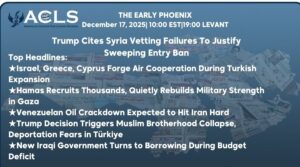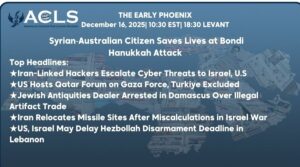By Rania Kisar
Published Sept. 13, 2023
★ When Nature Strikes and Villages Vanish: Morocco’s Seismic Catastrophe Draws a United Global Response
Marrakech, Morocco — Morocco is grappling with the catastrophic aftermath of a devastating 7.0-magnitude earthquake that has erased entire villages in Al Haouz province. The seismic event has claimed over 2,000 lives and left more than 2,400 injured (France 24). With the death toll expected to rise, the situation remains dire.
Global Response:
The Moroccan government has accepted aid offers from multiple countries, including Britain, Spain, Qatar, the UAE, Turkey, Tunisia, Algeria, Kuwait, France, and Taiwan. These nations have dispatched specialized search and rescue teams to aid in relief efforts (TRT Arab), emphasizing international solidarity with Morocco during this tragic time.
Geological Anomalies:
The earthquake’s epicenter was unusually located near Ighil in Al Haouz Province. This location is far removed from the known collision zones between the African and Eurasian tectonic plates, puzzling seismologists and challenging existing geological theories (Al Jazeera).
Tectonic Concerns:
Ongoing tectonic activities in the region could lead to the African continent splitting off over millions of years, adding another layer of concern to the current crisis (Al Hadath).
Citizens at Risk:
The Moroccan populace is facing severe hardships; many are forced to sleep outdoors due to the fear of aftershocks (TRT Arab). Al Haouz province has been particularly affected, with significant damage to buildings and infrastructure (Al Hadath). The province’s mountainous terrain has complicated rescue efforts.
Recovery Roadmap:
The Moroccan government has unveiled plans for reconstruction and relief efforts. Organizations like the International Monetary Fund (IMF) have also expressed solidarity with Morocco (SNA Business). However, the focus remains steadfastly on aiding the Moroccan people.
Artistic Tribute:
Syrian graffiti artist Aziz Asmar expressed his empathy for the Moroccan earthquake victims in a heartfelt display. He has drawn messages of support on walls affected by similar natural disasters in Syria and Turkey (TRT Arab).
National Mourning:
Morocco has declared three days of national mourning in recognition of this calamity, the deadliest earthquake to affect the country since the Agadir earthquake in 1960, which claimed approximately 15,000 lives (Al Hadath).
As rescue and relief operations continue, Morocco is at a crossroads: between enduring tragedy and exemplifying resilience, between geological mysteries and tangible human suffering. One fact remains clear amid this turbulence: Morocco is not standing alone.
The American Center for Levant Studies Message to the Generous People of Morroco:
On behalf of the American Center for Levant Studies, we extend our deepest condolences to the people of Morocco during this devastating time. The loss of life, injury, and destruction caused by the recent earthquake is a tragedy that weighs heavily on our hearts. We stand in solidarity with you and the international community in offering our support and assistance as you begin the difficult path to recovery and rebuilding. Our thoughts are with all those affected by this catastrophic event.
======================================================================
★ Charting a New Geopolitical Course: The India-Middle East-Europe Economic Corridor
The India-Middle East-Europe Economic Corridor (IMEEEC) has captured worldwide interest owing to its geopolitical significance (Al Jazeera). This transformative initiative secured endorsement during the G20 summit in New Delhi and enjoys support from influential nations, such as the United States, the European Union, Saudi Arabia, India, and Russia (Sharq Al Awsat) (Al Jazeera). The ambitious project aims to bolster trade, construct vital infrastructure, and improve global energy security (Al Hadath).
Significantly, Saudi Arabia has taken a pivotal role in advocating for swift action and the establishment of necessary mechanisms (Sharq al Awsat). The Kingdom is urging the immediate implementation of a Memorandum of Understanding (MoU) inked during the G20 meetings in New Delhi, with the aim of establishing an economic corridor linking India, the Middle East, and Europe. This initiative involves key nations such as Saudi Arabia, the UAE, the United States, Germany, India, France, Italy, and the European Union.
The IMEEEC project centers on enhancing trade, infrastructure, and global energy security. Infrastructure development is a central aspect, encompassing railways, ports, energy pipelines, and data cables (Al Jazeera). Israel’s role as a critical crossroads is key to the project’s success (Al Jazeera). Economically, it aims to elevate trade between India and Europe, foster clean energy exports, and enhance regional integration (Al Arabiya).
The White House underscores the IMEEEC’s dual corridors and its goals of securing regional supply chains, enhancing trade, and advancing environmental benefits (Sharq al Awsat). President Joe Biden’s engagement underscores its significance for American interests (Al Jazeera), while American energy envoy Amos Hockstein emphasizes its positive regional impact (Al Hadath). This initiative’s competition with China’s Belt and Road Initiative adds complexity to the evolving global landscape (Al Jazeera).
During the G20 summit, Erdogan engaged in a geopolitical balancing act (Al Jazeera). He questioned the U.S. stance on F-16 sales in connection to Sweden’s NATO entry, underscoring Turkey’s requirement for parliamentary approval. Concurrently, Erdogan advocated for Russia’s participation in Black Sea grain exports, contingent on SWIFT reconnection, adding complexity to regional tensions.
======================================================================
★ Three Days of Rising Tensions in Syria Signal Complex Power Shifts and Humanitarian Crisis
From Assad’s Regime to SDF, Multiple Factions Vie for Control Amid Regional Volatility
★Escalating Hostilities Spotlight Assad and SDF Struggles
On September 10, the Syrian Democratic Forces (SDF) implicated Assad’s National Defense Forces in tribal conflicts in Deir ez-Zor that left over 90 dead. The SDF also regained control of Dhiban, allowing residents to return. The same day saw 76 fatalities in Aleppo, Raqqa, and Al-Hasakah due to clashes between the SDF and Turkey-aligned factions.
Iran amped up its recruitment of Deir ez-Zor tribes via Ahmed Al-Hassan, contrasting Sheikh Nawaf Ragheb Al-Bashir’s call for SDF disengagement. Despite intense fire, Turkey’s “Syrian National Army” attempts to breach Manbij Military Council lines failed.
★Heightened Military Actions Intensify Regional Complexities
On September 11, the Autonomous Administration’s Internal Security Forces in Qamishli ceded cultural centers back to the Assad regime. In Deir ez-Zor, a drone strike injured a man and a child, while 15 people, including the Farmer’s Union leader, were detained by the SDF.
Talks between tribal leaders and SDF addressed conflicts resulting in 91 deaths and the release of 30 detainees, including Abu Khawla’s father. In Al-Hasakah, an operation led to two “National Army” deaths, and the SDF expanded control of Al-Baghouz.
★Syria’s Fractured Landscape: A Day of Escalating Conflict and Humanitarian Crisis Reveals Deepening Fault Lines
September 12, 2023
★Iranian Operations and Casualties
Two members of the pro-Iranian Al-Quds Brigade were killed near Deir ez-Zor, allegedly by ISIS-affiliated gunmen, sparking an immediate response as the brigade sent in reinforcements. In a separate but equally concerning development, Syrian regime forces executed a drone strike in eastern Deir ez-Zor, resulting in civilian casualties: one death and five injuries, including three children. As if adding fuel to the fire, Turkish artillery targeted Binah village in Afrin and Sheikh Ali town in Tal Tamr, leaving three more children injured.
★Civilian Life Grinds On With A Fragile Return to Normalcy
Despite ongoing hostilities, some semblance of normalcy returned to the eastern city of Hajin, where a curfew was lifted. Meanwhile, the Syrian Democratic Forces (SDF) released 39 detainees east of Deir ez-Zor, indicating that more releases are imminent pending tribal negotiations. However, the town still grapples with an ongoing bread crisis, exacerbated by high black market prices and alleged misconduct among some bakeries.
★Assad’s Diplomatic Battlefield
On the diplomatic front, Assad’s Foreign Minister, Faisal Al-Miqdad, launched a public attack against U.S. and Turkish activities in Syria. This rebuke comes as the SDF faces internal strife, dealing with resistance from the Bakara tribe in Deir ez-Zor and the arrests of critical ISIS and tribal affiliates in Raqqa.
★Emergence of New Iranian-Backed Factions
Amidst these complex layers of conflict, Nawaf Ragheb Al-Bashir established a new militia, the “Hashimite Tribes Regiment,” backed by the Syrian regime and Iran, which aims to counter the SDF’s growing influence. The militia appears to be part of the regime’s strategy to capitalize on tribal tensions in the region.
★Infrastructure: A Collapsing Lifeline
Damaged water stations in Deir ez-Zor highlight Syria’s fraying infrastructure. The equipment theft and damage to five regional stations amplify the area’s existing water crisis, already worsened by Turkey’s upstream control of the Euphrates River.
★Russian Interests Take Center Stage
Russia, not to be outdone, conducted joint patrols near Umm Jaloud with the Manbij Military Council. This action serves dual purposes: inspecting points vulnerable to attacks and delivering logistical support to areas east of the Euphrates.
★Accusations and Arrests: An Ongoing Saga
In a sweeping raid, the SDF arrested 15 individuals in al-Jia’a, including the head of the Peasants’ Union, thereby intensifying local unrest. A series of additional sweeps in Al-Mashhour and Al-Baghouz followed.
★★TIME LINE VIDEO August 27- September 8, 2023★★
Timeline of Events:
★ Tensions escalated along the eastern bank of the Euphrates River following an August 24th visit to northeastern Syria by former U.S. Secretary of Defense Christopher Miller and Central Command Commander General Michael Corella.
★ August 27, 2023: SDF arrests DMC commander in Al-Hasakah, sparking heavy Deir ez-Zur fighting. The recent clashes stem from more than just the arrest of Ahmad Al-Khabal, leader of the Deir Ez-Zor Military Council, and four others on charges of cooperating with Iranian militias and corruption.
★ August 28, 2023: 22 deaths, SDF-National Defense Forces tensions; Arab clan issues a 12-hour ultimatum.
★ August 29-30, 2023: Clashes escalate, Arab tribal forces retaliate, Kurdish forces respond with airstrikes and curfews.
★ August 31, 2023: Iranian-backed militants target oil well near Koniko gas field in Deir ez-Zur countryside, heightening security tensions; smoke seen rising from the targeted well.
★ September 1, 2023: Residents flee multiple towns to safer areas. Arab tribal forces control territories that trigger Kurdish reinforcements; in northwestern Syria, Arab tribes support Deir ez-Zur counterparts.
★ September 2, 2023: A Turkish drone targets an “SDF” car in Qamishli’s countryside, resulting in the death of an “SDF” leader and injuries to two others.
★ September 3, 2023: Deputy Assistant Secretary Goldrich and Major General Foyle of the Joint Task Force met “SDF” and tribal leaders in northeastern Syria, highlighting addressing grievances, curbing interference, and ending violence. The Joint Task Force supported “SDF,” called for peace in Deir Ezzor amid clashes, and countered clan advancements with “SDF” reinforcements in Raqqa. Northwestern Syrian Arab tribes vowed to confront Kurds in Aleppo and Manbij, forming a mobilization hub northeast of Aleppo with a “war tent” of over 10,000 people, aiming for this objective.
★ September 4, 2023:
♦ Arab clans reject “SDF” truce, clashes escalate.
♦ Manbij Military Council counters attacks.
♦ Tribal fighters targeted villages in Manbij to support Deir ez-Zor clans in clashes against SDF for the eighth day.
♦ SDF reported 11 members killed in clashes with Deir ez-Zor Military Council and clans’ support.
♦ Residents of Deir Ezzor countryside expressed strong support for the Syrian Democratic Forces’ campaign against ISIS cells, criminals, and drug smugglers, rejecting attempts to disrupt security and stability.
♦ SDF gained control of Al-Shuhail in Deir ez-Zor as clan fighters withdrew to Al-Hawaij and Dhiban, Sheikh Al-Akidat Ibrahim al-Hafel’s stronghold.
♦ Mazloum Al-Abdi, leader of the SDF, revealed armed groups supported by the Syrian regime’s entry into SDF-controlled areas, exposing the regime’s northeast Syria plans. He engaged with Deir ez-Zor tribal leaders for a peaceful clash resolution, highlighting Arab clans’ resistance to the regime’s return. Abdi noted supervised US moves, their call for peace, and air support. He dismissed the Iraq border operation and accused Turkey of instigating Manbij confrontations.
♦ The American Humanitarian Euphrates Civilization Organization (HEUC), a non-profit focused on societal development and combating extremism in crisis areas, stated the Arab Tribes. The statement calls for an end to ongoing conflicts, explicitly praising the people of Deir ez-Zor for their resistance against SDF forces, commitment to Syrian unity, and rejection of the Assad regime and Iranian militias.
★ September 5-8, 2023:
In a volatile regional landscape, multiple actors are shaping the unfolding dynamics in Syria. SDF Commander Mazloum Abdi is pushing for dialogue with Arab tribes in Deir Ezzor and blaming the Assad regime for inciting unrest. He has pledged to address Arab clans’ concerns and rectify governance issues. Concurrently, U.S. forces have increased local engagement in Deir Ezzor to assess security and humanitarian conditions. Turkish troops are escalating attacks against the SDF in Al-Raqqa Governorate, prompting power outages in several villages. Turkiye’s Foreign Minister Hakan Fidan criticized U.S. support for the SDF and called for an end to what he views as oppressive policies against Arabs. Reports have also emerged that the SDF established a drone-manufacturing base in Al-Hasakah. Meanwhile, an Assad regime officer, Mahidi Aqab Al-Abdullah, has been seen fighting alongside local militants against the SDF. Violence in “Self-Administration” areas has surged, with 185 reported dead and injured in August. Although the Syrian Democratic Forces announced the end of the military oprations in the rea as stated in their offical website on September 8, 2023, confirming the Iranian and Assad regime complicity.
★ Clashes began the Arab tribes began to demand better services, autonomous municipality and civilian management. What came next resulted in the loss of more than 190 lives from both sides, including at least nine civilians.
English-subtitled video from Al Hadath
What are the main functions of the Syrian Democratic Forces:
The Syrian Democratic Forces (SDF), supported by the United States, control strategically important territories, including the Omar oil and Conoco gas fields. These areas are critical for maintaining regional stability, managing key supply routes for pro-Iranian militias between Syria and Iraq, and overseeing ISIS prison camps in the region (See subtitled translation video)



